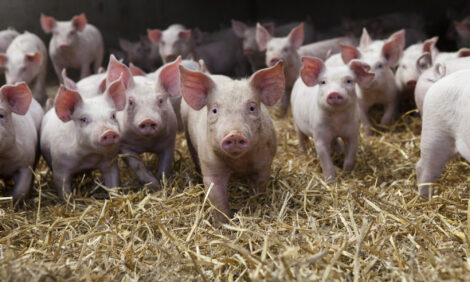



NAPPRS: Advances in PRRS research
Current research focuses on the pregnant gilt model of PRRS infectionEditor's note: The following presentation by Joan K. Lunney, Animal Parasitic Diseases Laboratory, NEA, ARS, USDA, Beltsville, MD, USA, was shared during the 2024 North American PRRS Symposium.
Porcine reproductive and respiratory syndrome (PRRS) was first reported as “mystery swine disease” in Lelystad, the Netherlands, 23 years ago, and in North America in 1992. We now know this disease is due to infections with type 1 and 2 PRRSV, a single stranded RNA virus. Since then, major research efforts have resulted in vaccines with moderate to poor efficacy in preventing infection, particularly with heterologous viral strains. As a result of NC229 there has been better coordination to address vaccine efforts.
The NC229 research consortium was created in 1999 in response to the emergence of PRRSV. The project follows the traditional "consortium" approach: stakeholder-driven needs to combat swine diseases are identified and scientific solutions pursued by combining funds from federal, state, commodity groups, and the animal health industry. Journal of Virus Research, Vol 280, 15 April 2020. DOI: 10.1016/j.virusres.2020.197898
Our genomic resistance efforts, termed the PRRS Host Genetics Consortium, were complementary to the PRRSV vaccinology research. We assembled a diverse team of researchers: virologists, immunologists, geneticists, computational biologists, to probe underlying mechanisms that could result in PRRS resistant pigs. With National Pork Board funding and cooperation from six different swine breeding companies, we performed 15 trials analyzing samples collected from PRRSV2 infected nursery pigs. We discovered a genetic allele of GBP5 that resulted in pigs with lower viral load and increased weight gain despite the presence of PRRSV infection. This allele is now being used for genetic selection by breeding companies. More detailed gene and protein expression work has pinpointed gene expression pathways and alternate anti-viral response mechanisms.
More recently, we have focused on the pregnant gilt model (PGM) of PRRSV infection working with a team of Canadian and US researchers including those with reproductive expertise. We probed critical maternal and fetal tissues and genes to forecast fetal resistance (a fetus with no viral load despite maternal infection), resilience (a fetus which survives despite PRRSV RNA in fetal thymus and serum following maternal infection), or susceptibility (high viral load and/or meconium staining) to congenital PRRSV infection. Data supports the hypothesis that placental transfer of the virus is a rate limiting step and that specific genes associated with innate immunity help protect the fetus.
This research could not have been accomplished without well-organized teams, starting with the detailed planning of experiment designs and sample collection, the organized PRRSV infections in Biosafety Level 2 (BSL2) facilities, the pig breeding companies providing pigs from current genetic lines, and the dedicated teams carefully collecting valuable blood and tissue samples.
That work set the basis for data production and analysis by students and postdocs mentored by established scientists, the secure database storage of results for continued evaluation and the final submission of manuscripts for peer review. Moreover, none of this could have been accomplished without the backing and funding by the National Pork Board, USDA NIFA and ARS, Genome Canada and affiliated universities and the NC229 viral and NRSP-8 genome projects. It all led to major team accomplishments!
[The NRSP-8 project, the National Animal Genome Research Program, focuses on advancing animal genomics research, particularly for agricultural species.]









